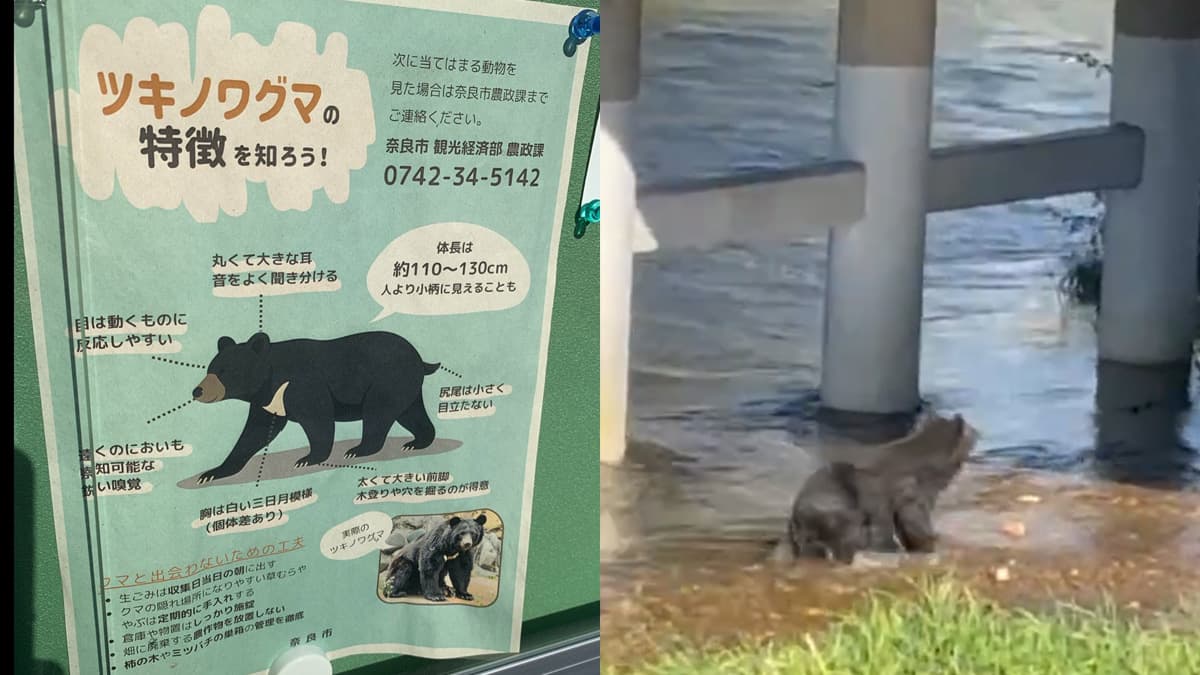Japan to bolster bear control efforts after record-high fatalities
Japan's Environment Ministry will strengthen bear control measures after a record nine fatalities this year. Experts cite climate change, food scarcity, and depopulation as key factors behind rising bear-human conflicts.

Japan's Environment Ministry has announced plans to intensify its response to a surge in bear attacks that have killed a record nine people so far this year, surpassing the previous high of five fatalities recorded in the 2023–24 fiscal year.
Speaking at a news conference on 23 October, newly appointed Environment Minister Hirotaka Ishihara described the situation as “a big problem, a serious problem”, and pledged tougher measures.
“We are committed to further strengthening various measures including securing and training government hunters and managing the bear population,” Ishihara said.
Ishihara assumed his role the previous day, following the appointment of Prime Minister Sanae Takaichi and the launch of her cabinet.
Rise in bear encounters across Japan
Bear attacks in Japan have escalated sharply in 2025, particularly in northern and north-eastern regions such as Hokkaido, Iwate, and Fukushima prefectures.
The most recent incident occurred on 10 October, when a man in his 70s was found dead on a mountain in Iwate while mushroom picking. A week earlier, another Iwate resident was found dead near a hot spring facility where he was employed.
Bears have not only attacked residents in forests but have also ventured into populated areas, injuring residents and entering commercial premises. In one case, a bear entered a supermarket in Numata, Gunma, injuring two customers and alarming dozens more. The bear reportedly became agitated as it struggled to find an exit.
On the same day, a farmer in Iwate was scratched and bitten by a bear and its cub outside his home. In a separate case, a Spanish tourist was attacked at a bus stop in Shirakawa-go, central Japan.
As of 24 October, public broadcaster NHK reported that 64 people across 12 prefectures had been injured by bear attacks since the beginning of the month, with four of those resulting in fatalities. This brings the total number of deaths in 2025 to at least nine and the number of injured to over 100 — up from 85 injuries and three fatalities the previous year.
Changing environments and ageing communities
According to Naoki Onishi of the Forestry and Forest Products Research Institute, around 70 percent of bear attacks occur in areas where people live or work, including residential neighbourhoods and farmland.
A joint study by NHK and Onishi found that 44 of the 64 recorded attacks since October happened in such areas, with food waste or agriculture-related items attracting bears in 33 of those cases.
Onishi also warned that depopulation and ageing populations in rural regions, especially in the Tohoku area, have created more opportunities for bears to establish habitats. Abandoned farmland and vacant homes provide shelter, while the decline in hunters due to Japan’s ageing demographic has reduced efforts to control the bear population.
He urged residents to remain vigilant through December — the period leading up to bear hibernation — and to avoid walking in the early morning or at night, even for short errands.
Climate change and food scarcity
Experts believe that climate change is playing a significant role in pushing bears into human-populated areas. In particular, low yields of beech nuts, a key autumn food source for bears, have been attributed to shifting climate patterns.
This scarcity is believed to be driving bears further afield in search of sustenance, resulting in increased contact with humans.
Japan is home to two bear species: the Asian black bear, also known as the moon bear, which is widespread in Honshu and Shikoku, and the larger brown bear, found primarily in Hokkaido. While thousands of bears are culled annually, the government acknowledges that current measures may be insufficient given the rising incidence of attacks.
The Environment Ministry has indicated that additional steps may include increased funding for bear control, expansion of trap and relocation efforts, and public awareness campaigns in affected areas.








0 Comments